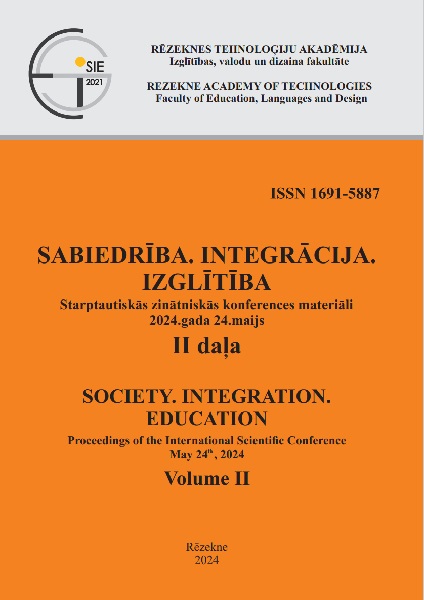THE EFFECT OF ULTRASONIC DIFFUSER ON INDOOR AIR QUALITY
DOI:
https://doi.org/10.17770/sie2024vol2.7837Keywords:
indoor air pollution, indoor air quality, microbial contamination, PM, ultrasonic diffuserAbstract
The usage of ultrasonic diffusers in indoors has raised concerns regarding their potential health effects, mostly due to the lack of research on the matter. This study’s aim was to analyse the effect of distilled water, tap water, and tap water with essential oils droplets from an ultrasonic diffuser on the number of particle matter and microbiological contamination in indoor air under laboratory conditions during summer and winter seasons. The most common species throughout all experiments were the Gram+ Aerococcus viridans and Micrococcus luteus, accounting for 21.33% (93 CFU/m3) and 13.76% (60 CFU/m 3) of the total bacteria count. Four different fungal species were identified over both seasons, moulds were more common making up 81.25% (65 CFU/m 3). It was noted that the microorganisms identified were not pathogenic, presenting no significant infection risk from the diffuser's use. Experiments involving the use of an ultrasonic diffuser with DW demonstrated that PM1, PM2.5, and PM10 levels can be maintained within acceptable ranges over a 4-hour period. However, these experiments also highlighted an increase in nanoparticle concentrations, for which current guidelines lack specific recommendations. The diffuser was cleaned before every experimental setup stage, avoiding any residual contamination.
References
Chen, C., & Zhao, B. (2011). Review of relationship between indoor and outdoor particles: I/O ratio, infiltration factor and penetration factor. Atmospheric Environment, 45(2), 275-288. DOI: 10.1016/j.atmosenv.2010.09.048
Dietrich, A. M., Yao, W., & Gallagher, D. L. (2022). Exposure at the indoor water-air interface: Fill water constituents and the consequent air emissions from ultrasonic humidifiers: A systematic review. Indoor air, 32(11), e13129. DOI: 10.1111/ina.13129
Lau, C. J., Loebel Roson, M., Klimchuk, K. M., Gautam, T., Zhao, B., & Zhao, R. (2021). Particulate matter emitted from ultrasonic humidifiers-Chemical composition and implication to indoor air. Indoor air, 31(3), 769–782. DOI: 10.1111/ina.12765
Lee, J. H., Ahn, K. H., & Yu, I. J. (2012). Outbreak of bioaerosols with continuous use of humidifier in apartment room. Toxicological research, 28(2), 103–106. DOI: 10.5487/TR.2012.28.2.103
Tyndall, R. L., Lehman, E. S., Bowman, E. K., Milton, D. K., & Barbaree, J. M. (1995). Home humidifiers as a potential source of exposure to microbial pathogens, endotoxins, and allergens. Indoor Air, 5, 171-178. DOI: 10.1111/j.1600-0668.1995.t01-1-00003.x
Von Hahn, N. (2022). Indoor air quality (IAQ). European Agency for Safety and Health at Work. Retrieved from https://oshwiki.osha.europa.eu/en/themes/indoor-air-quality-iaq
Yang, Z., Chen, L. A., Yang, C., Gu, Y., Cao, R., & Zhong, K. (2022). Portable ultrasonic humidifier exacerbates indoor bioaerosol risks by raising bacterial concentrations and fueling pathogenic genera. Indoor air, 32(1), e12964. DOI: 10.1111/ina.12964
Yao, W., Dal Porto, R., Gallagher, D. L., & Dietrich, A. M. (2020). Human exposure to particles at the air-water interface: Influence of water quality on indoor air quality from use of ultrasonic humidifiers. Environment international, 143, 105902. DOI: 10.1016/j.envint.2020.105902






